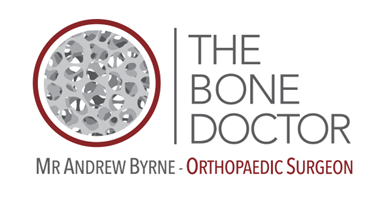Orthopaedic Hip Procedures and Expert Care
Total Hip Replacement –
The direct Anterior Approach
Once your hip has worn out, a few options exist. A total hip replacement is really the "gold standard" and not as frightening as it was once upon a time. There are many ways to have this operation, but if you ask other people who have been through this ordeal, one comment is common. "Have it from the front if you can".
The direct anterior approach comes from the front of the hip and goes between two muscles into the joint without cutting or detaching tendons. This allows people to walk immediately after surgery, tackle stairs and return to driving far quicker than with traditional total hip replacement surgery. Many patients do not require crutches beyond a few days as they regain confidence rapidly and are safe to return to work and drive independently. The hip replacement parts are not glued in place but are designed to allow your bone to grow into them; thus, no "grout is present" (like with tiles in a bathroom) to work its way loose over time, like cemented total hip replacements.
With the direct anterior approach, Mr Byrne uses X-ray video (image intensifier) at the time of surgery to ensure that your leg length is as close to perfect as possible with current technology. Most surgeons use their 'best guess" based on 2-dimensional X-rays or scans done prior to surgery (often many weeks or months) but do not consider the progressive wear that may have occurred since these tests were completed. Leg inequality with regard to length after surgery remains a concern to many patients. The technique of using X-ray while asleep under anaesthetic minimises this risk (although not negating it completely).
Total Hip Replacement & Gluteal Repair
If a gluteal tear is suspected or confirmed, then it requires an attempted repair. If the tear is ignored and a direct anterior approach is performed, the tear may still be a significant issue and lead to a poor outcome. It requires addressing.
The gluteal tendons are the ends of the buttock muscles travelling from your backside to the side of your hip. They are very powerful muscles carrying all your body weight when walking, rising from sitting or using stairs. Following a repair of the gluteal tendons, rehabilitation needs to be slow. No sideways exercises are allowed and must be avoided for eight weeks. Even being careful after surgery, they sometimes retear. They cannot be repaired reliably in this event.
Your hip may be a non-cemented variety, which we use in the direct anterior approach if your bone quality is good, but it will be a cemented variety if the bone is soft or weakened in any way. This strengthens the weaker bone, allowing for immediate full weight bearing.
Schedule your consultation for improved hip function today.
